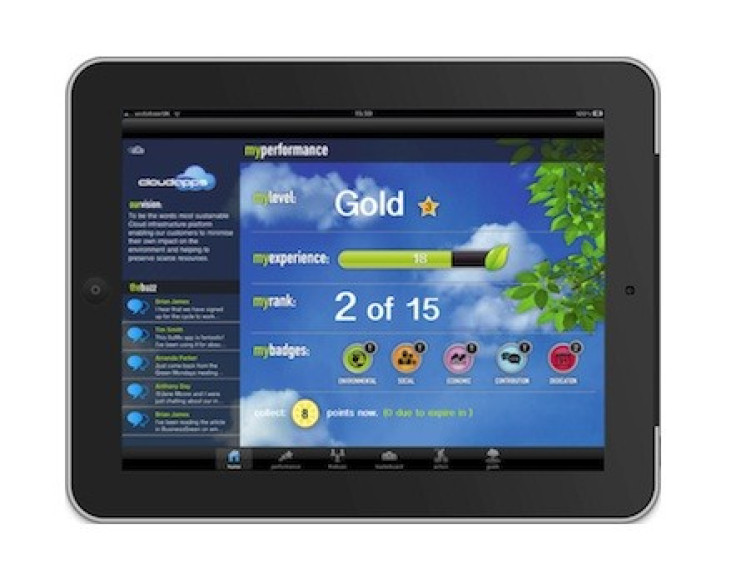SuMo App Promises to Cut Corporate Costs - and Fight Climate Change

Companies that must meet strict sustainability targets and watch their bottom lines as they weather the wider economic storm may turn their attention to a new app that promises to cut their costs as they save the environment.
As tackling climate change becomes more imperative and regulations about carbon emissions become tighter, many firms are having to take action or else face hefty fines.
SuMo, launched by developer CloudApps, draws data from a business's expenses system and gets the company employees to compete on a leaderboard by completing challenges geared towards saving the firm money, such as travelling to a meeting by train instead of taxi, as well as cutting down on emissions and energy usage.
Staff are then given rewards in line with met objectives, such as the amount of money they save or sustainability targets they reach.
"At home we are all responsible for paying the utility bills, so we make sure the lights are off, the TV, the radio, the doors are shut, the windows and everything else, the taps aren't running when we're in the house," said Peter Grant, CEO of CloudApps, in an interview with IBTimes UK.
"The reason we do that is we have a vested interest. Yet when we go into the workplace all that common sense seems to leave us and we don't care. The reason we don't care is because we are not paying the bills.
"So our argument is that if you incentivise people and get them involved, devolve that ownership around those targets, and you share the rewards with them, then you should see an improvement on your bottom line.
"And they can do that very quickly."
SuMo can integrate different sorts of rewards, such as Amazon vouchers, or the business can set their own internal treats eg, extra time off.
It is being used by a handful of companies - Grant won't say exactly how many - and was in beta testing for around 18 months before its October launch.
From the feedback given by the testers, CloudApps added a leaderboard, chat facilities, the ability to friend other users, and a trophy cabinet to store badges from past achievements. More additions are due.
"We have already got plans," said Grant.
"In our roadmap for next year, in March so not that far away, you will be able to post out your challenges onto your social network, whether it be a company or personal one to let your friends know what you have just completed.
"You will be able to do team challenges."
Grant cited the product Fitbit as an inspiration for where he wants to take SuMo next.
Fitbit has users attach a wireless tracker to measure their physical activities in a day, before relaying back information on how far they have walked, how many calories they have burned, and so on.
Firms using SuMo could soon be able to incentivise healthy living among their employees by offering rewards linked to exercise and diet, Grant said, adding that they are looking to "integrate with the health and wellness types of technology".
To use SuMo firms pay "the price of a Starbucks per employee per month," said Grant, promising a return on investment (ROI) in "four months or less".
"If you're going to put LED lighting in on green technology, the ROI is anything from 12 to 24 months on significant investments. But if you change people's behaviour then you can see a much faster ROI and that's where the game mechanics come in," he said.
Gamification
SuMo uses gamification techniques to try to keep users engaged. One of the issues arising in gamification is keeping the user experience fresh enough to sustain interest, else risk people dropping off and becoming inactive, particularly if you have a larger staff base.
One of the businesses using SuMo has 8,000 employees.
"The difference between this and a game is that business changes weekly, monthly, quarterly. So what you mustn't do, as we have learnt, is have a whole set of challenges and put all of those into the game," Grant said.
"What you try and do is give three or four pertinent challenges to the set group of users you want to address, such as sales, marketing, finance, whatever, and get everybody with those on board first of all."
Having new rewards each month should help maintain user activity as there is always something tangible to achieve, as well as the competitive nature of the leaderboard inspiring a, hopefully amicable, rivalry between colleagues.
Grant insists that staff using the app produce results.
"What we found is that the people who we took SuMo away from last year then drifted back into their old habits because they didn't have this barometer benchmarking them," he said.
He also gave an example of one company that saved millions because their staff had focused on saving travel expenses by using SuMo.
The company was spending $24m in total on travel and expenses, of which $18.3m was on air travel, $3.5m was on taxi and limo usage, and $1.5m was on mileage claims.
They saved 7 percent on air travel, 25 percent on the taxi and limo usage, and 15 percent on mileage claims, with a net saving of 9 percent overall - accounting for around $2.1m.
Around 10 percent in carbon emissions was saved too.
"If you take carbon, and you calculate carbon at £14 a tonne, there's also a saving there as well," said Grant.
He was also keen to emphasise that there are "softer benefits" to the app, such as employee retention, people feeling good about taking part in reducing emissions, and feeling more engaged in a firm.
"These are a bit more intangible, and difficult to quantify, but just as important," Grant said.
© Copyright IBTimes 2024. All rights reserved.






